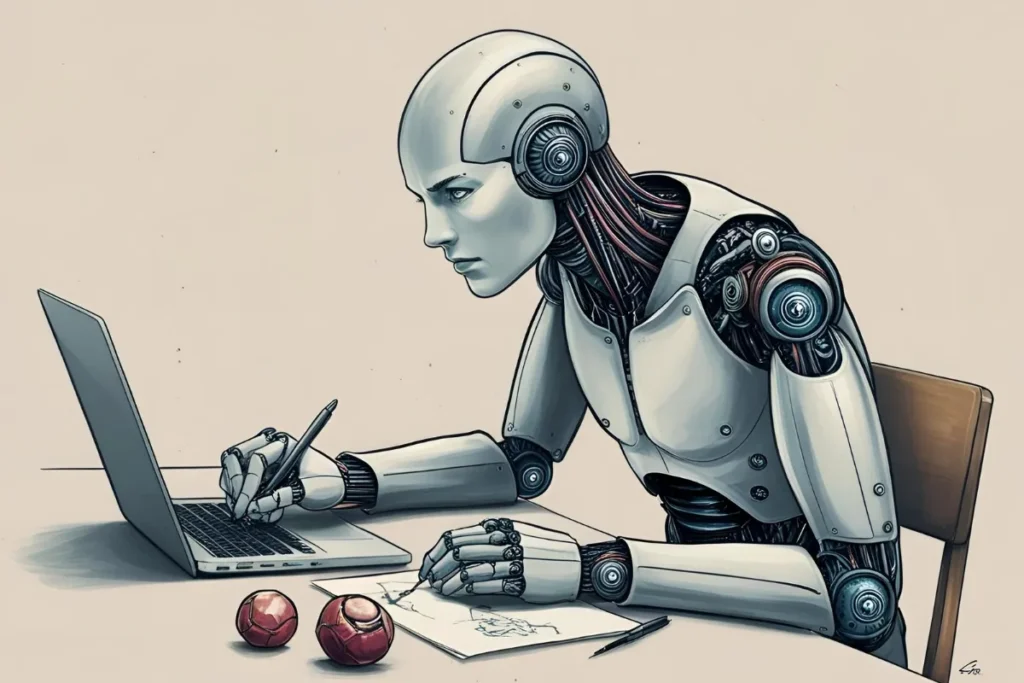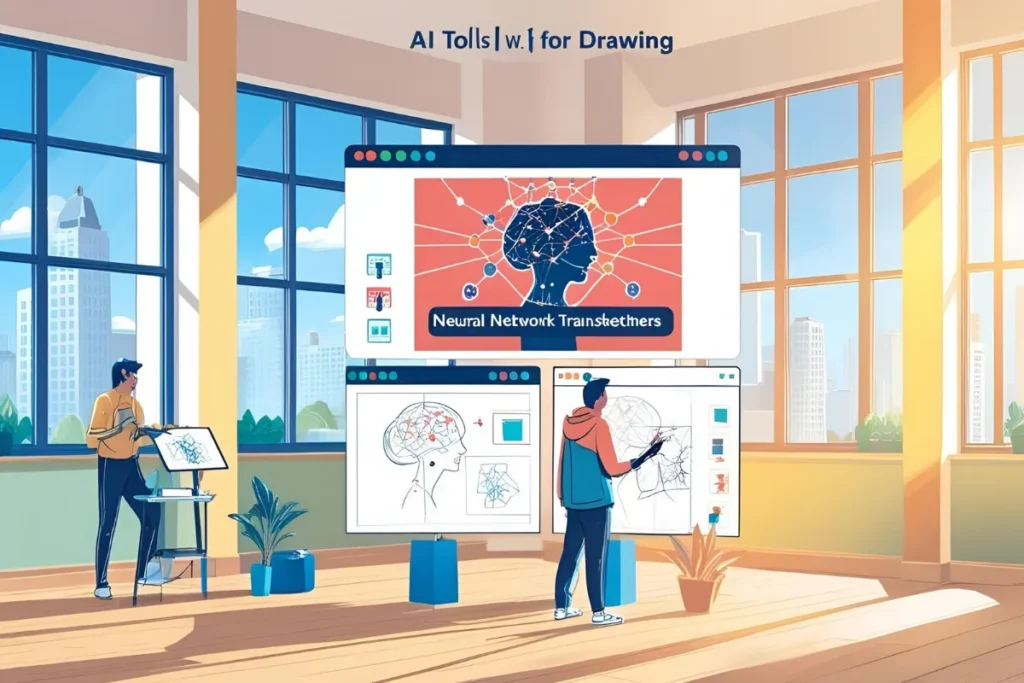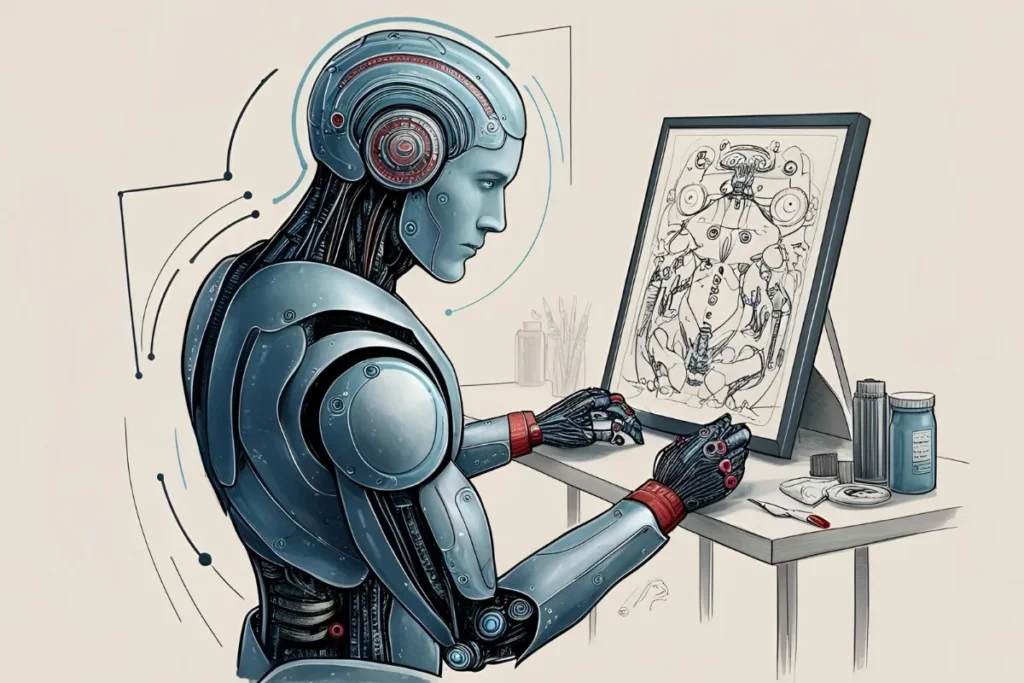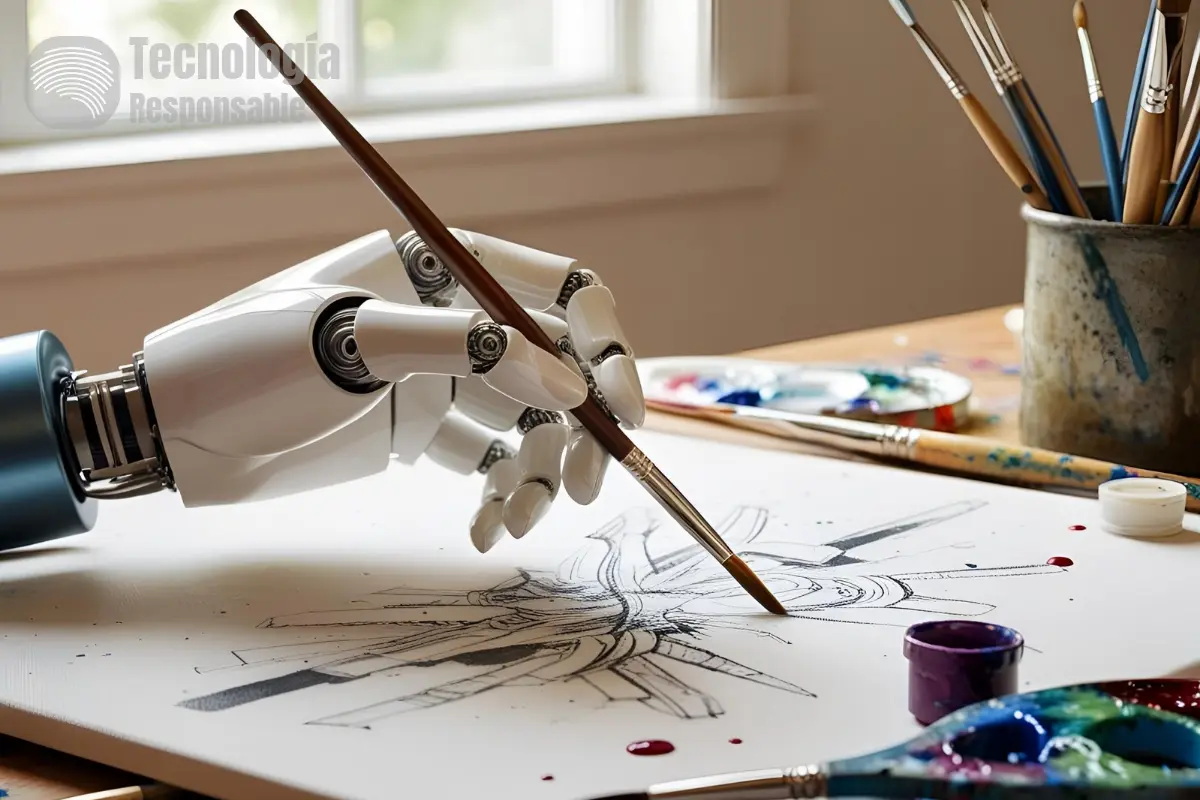Have you ever imagined creating a masterpiece with a simple text? This is now possible thanks to artificial intelligences that draw, generate, and enhance quality images in many styles such as: realism, caricatures, cyberpunk, anime, and much more. Now you can create your waifus effortlessly, you rascal.
Table of Contents
How Does an AI That Draws Work? The Magic Behind Art.

What Are They and How Do They Work?
Generative AI are not magic, but advanced mathematics. They use neural networks, “systems inspired by the human brain” trained with millions of images and texts.
Or, simply put, these AIs can understand what you ask them and relate it to visual elements to then create a coherent image.
Types of Artificial Intelligence for Drawings
- GANs (Generative Adversarial Networks): In this type of AI, two algorithms battle each other to generate the best result. For example: StyleGAN, an AI that generates fictitious human faces, in which one algorithm generates an image of a face and the other algorithm is responsible for checking if the created image is a human face or not.
- Diffusion Models: This type of AI, starting from “visual noise,” transforms the image until it generates a coherent and satisfactory result for the user. In other words, it generates images using visual noise, similar to when a stain on the floor has the shape of a cartoon or a face. Example: DALL-E 2 and Stable Diffusion.

How to Make a Drawing with AI?
When generating images with AI, the prompt plays a very important role. You have to know how to ask so that the AI knows what you really want to achieve. We have an extensive tutorial on how to create effective prompts that might be useful to you.
Here I briefly explain how prompts are created. What you need to know is that the more descriptive the prompt, the better the result will be. For example, if you want a drawing of women walking in a park, don’t just write that, as the result will be a deformed thing, believe me, it has happened to me! Don’t assume that the AI will understand what you meant by women walking, better try writing like this:
Prompt Example: “Create a group of 3 women, each next to the other, they are facing away from the camera and their faces are not visible, the one on the left is tall, wears a green dress, and has long black hair, the one in the middle is of average height, wears a blue dress, and has long blond hair, the one on the right is short, wears a purple dress, and has short red hair, in the background you can see a park with green grass, the day is sunny and the lighting is clear and cheerful, the three women are walking on the grass and seem happy enjoying the sunny day.”

As you can see, this prompt will be much more effective than just writing: “women walking in a park.” Practice creating long and very descriptive prompts and you will see a difference in the results. Remember that the AI cannot read your mind, the more information you give it, the better and more satisfactory the result it generates will be.
20 Best AI That Draw What You Ask Them To:
- AnimeGenius: AI that draws anime and manga – Paid with free version.
- MimicPC: AI to create images online – Paid with free version.
- Adobe Firefly: Generates images from text – Free.
- Neural Love: Generates avatars – Paid with free version.
- Magic Studio: Enhances photos, removes backgrounds – Paid with free version.
- Aura AI: App, generates images with AI on mobile – Paid with free version.
- Freeflo: Creates prompts to use in image generation – Free.
- Vecteezy AI: Upload an image and search for similar photos to use – Paid with free version.
- Catbird: Generates many images with various styles from text – Free.
- SUPERMACHINE: Creates drawings, images, art – Paid.
- Skybox Lab: Creates 360° images from text – Free.
- Picsart: Enhances photos with AI filters – Paid.
- Luma AI: Creates 3D images with some photos – Free.
- Playground AI: Creates artistic images – Free.
- Craiyon: Draws images with text – Free.
- Midjourney: Generative AI that creates high-quality images – Paid.
- Lexica: Uses the stable diffusion engine to generate images – Free.
- Photosonic: Generates realistic and artistic images – Paid.
- Artflow: App for art and animated images – Paid with free version.
- Endless VN: Generates animated stories – Paid with free version.
- Midjourney Prompt Generator: Generates prompts for Midjourney – Free.

I have used these AIs many times to generate images for multiple purposes and products and I can recommend these below which in my opinion have performed the best in my experience.
My 3 Best Artificial Intelligences
Neural Love
The best platform to convert images or photos into high-quality moving videos. Video rights: Neural love
View OfferMimicPC
Best open-source platform to easily create videos, images, and audio at an affordable price. Video rights: MimicPC
View OfferVecteezy
Upload an image and it will search for similar images for commercial use that you can use in your projects. Video rights: Vecteezy
View OfferComparison of the most popular generative AI:
| Tool | Advantage | Disadvantage | Best for.. |
| Midjourney | Unique artistic style, impressive quality | Requires Discord; paid | Conceptual art, fantasy |
| DALL-E 2 (OpenAI) | Detail accuracy, ChatGPT integration | Expensive for commercial use | Advertising design, photorealism |
| Stable Diffusion | Free and open source, highly customizable | Needs powerful hardware | Technical artists, DIY projects |
| Craiyon | Free, simple | Lower quality | Casual experimentation |
| NightCafe | Varied style options, active community | Daily limits in free version | Collages and abstract art |
Ethical dilemmas of generative AI:
Who owns the art?
The ethical controversy about who is the true owner of the images generated with AI, is a debate that has been on the table for some time. Will it belong to the user who wrote the prompt, does it belong to the platform that owns the AI that created the image, or does it belong to the artists whose works served as inspiration to train the AI? What do you think?
In 2023 a group of artists sued Stability AI for using their works to train an AI model without consent, this is complex because if I were an artist I would not like to see my art being misused by these AI models, which could have obtained their data to train the AI in a somewhat questionable way.
Another problem that drawing or image generation AIs can have are biases, since an AI could replicate stereotypes of races, genders or cultures. In other words, if you ask an AI to draw an Asian man, it might draw a short, thin man practicing Kung Fu and eating rice, these stereotypes are precisely negative.

Uses Beyond Art: Where Are These AIs Used?
- Graphic Design: Create logos, posters, or illustrations in minutes.
- Video Games: Generate textures, characters, and scenarios quickly.
- Advertising: Prototype visual campaigns without expensive photoshoots.
- Fashion: Design innovative garments or textile patterns.
- Education: Personalize learning.
Success Story:
The *Ubisoft* studio uses AI to sketch game environments, accelerating the creative process.
Summary:
These artificial intelligence tools can take your art to a more creative level, but remember that the AIs listed here CANNOT be used to generate uncensored content such as explicit content (nudes or pornography, hentai, nsfw, violence) always remember to use AI responsibly.

